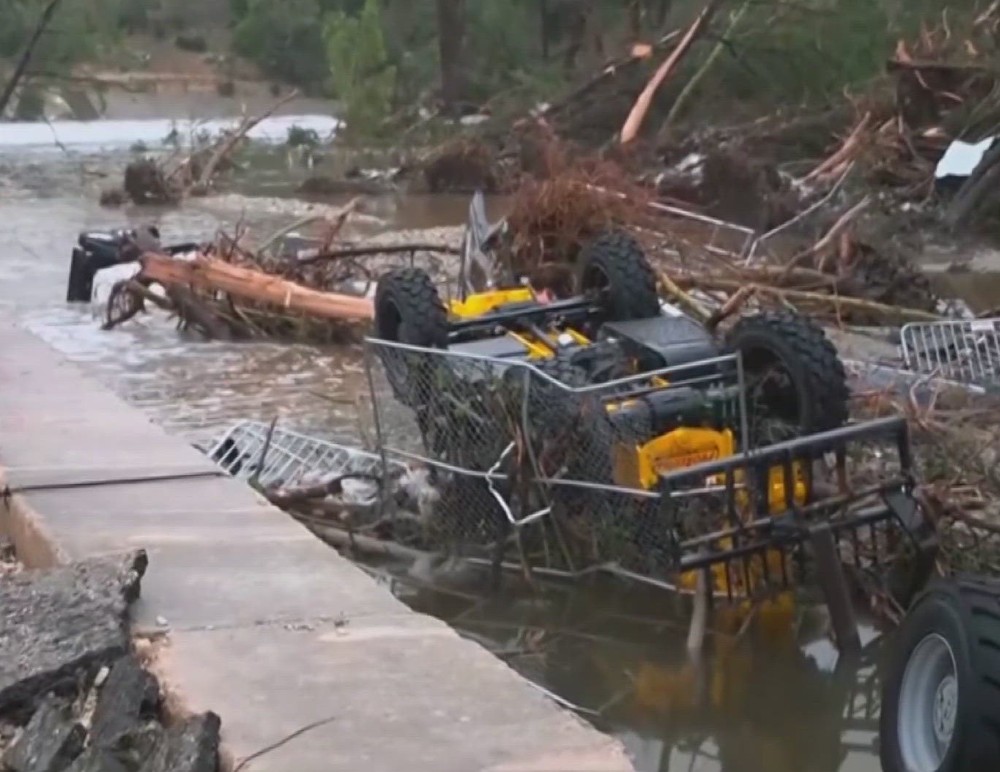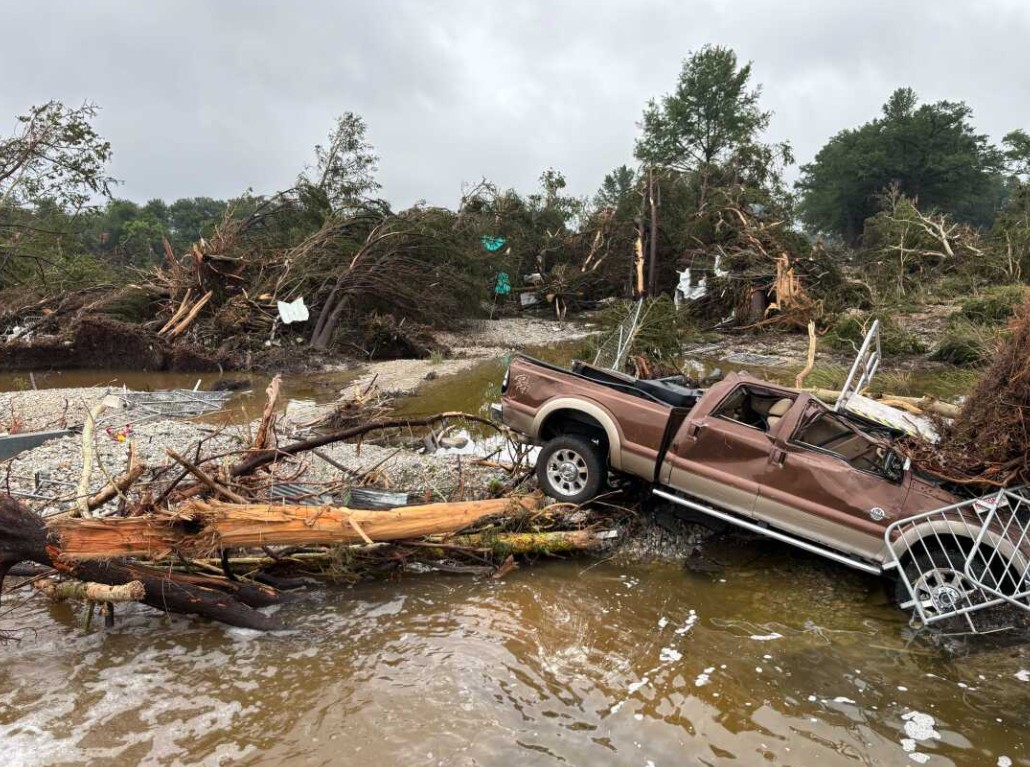Texas Flooding Video Captures Dramatic River Rise
In the early hours of Friday morning, a devastating natural disaster struck Texas Hill Country, unleashing powerful floodwaters that surged through communities with alarming speed and intensity. The Guadalupe River, typically calm during the summer months, rose 26 feet within just 45 minutes, an unprecedented spike that stunned emergency officials and left a trail of destruction in its wake.

According to Texas state officials, the catastrophe has claimed the lives of at least 32 people, including 14 children and 18 adults. Even more alarming is the ongoing search for 27 girls from Camp Mystic, a local Christian summer camp, who remain missing. Rescue teams continue their efforts as hopes of finding more survivors dwindle. Over 850 individuals have been rescued thus far, with more than 100 of them airlifted by helicopter from treacherous flood zones.
Contents
A Sudden and Full Video
The disaster unfolded rapidly. On Wednesday, the Texas Division of Emergency Management (TDEM) had issued alerts for potential flooding in Central and West Texas. Resources were mobilized, and swift water rescue teams were strategically deployed to high-risk areas. However, even with preparations in place, the actual rainfall far exceeded predictions.
Texas Flooding Video
Residents went to bed Thursday night with little indication of the chaos that was about to unfold. Torrential rains fell throughout the night, overwhelming rivers, creeks, and drainage systems. The Guadalupe River swelled to dangerous levels, catching residents and campers off guard. By sunrise Friday, entire neighborhoods were submerged, vehicles swept away, and communication infrastructure heavily damaged.
The Impact on Camp Mystic
Among the most heart-wrenching aspects of the disaster is the uncertainty surrounding the 27 missing girls from Camp Mystic. The camp, which hosts hundreds of young attendees each summer, was directly in the path of the floodwaters. Questions are now mounting as to why the camp was not evacuated ahead of time.

When asked during a press conference why local camps did not initiate evacuations, Kerr County Judge Rob Kelly, the area’s top elected official, said, “I can’t answer that. I don’t know.” His response only deepened public frustration and fueled demands for accountability.
Survivors from the camp described a terrifying scene: cabins rapidly filling with water, counselors trying desperately to lead children to higher ground, and screams echoing in the darkness. Helicopter rescue crews arrived at daybreak, but many had already been swept away by then.
An Unfolding Emergency
Despite the tragedy, there were moments of incredible bravery and community resilience. More than 850 people were rescued as floodwaters raged through the region. Emergency personnel conducted daring helicopter lifts and boat extractions, navigating through debris-filled waters and collapsing bridges.
The Texas Emergency Management Chief, Nim Kidd, addressed the public’s concern over the forecasting failure. “Everybody got the forecast from the National Weather Service,” he said. “It did not predict the amount of rain that we saw.” He emphasized that emergency crews had been on alert, but nature outpaced even their most advanced modeling systems.
Political Reactions and Calls for Focus
In the wake of disaster, public officials urged unity and focus on the ongoing search and recovery missions. U.S. Representative Chip Roy, R-Texas, who was in the region celebrating the Fourth of July, discouraged immediate blame. “I’d just ask everybody, pause, take a breath for the recriminations and the Monday morning quarterbacking,” he said. “Let’s focus on finding those who can be found.”

Meanwhile, Homeland Security Secretary Kristi Noem offered condolences and acknowledged frustrations over the limitations of current forecasting systems. She stressed the difficulty of predicting extreme weather and pledged federal support to communities affected by the floods.
“I do carry your concerns back to the federal government, to President Trump, and we will do all we can to fix those kinds of things that may have felt like a failure to you and to your community members,” Noem said during a Saturday briefing. She added that the Trump administration was working on upgrading the outdated technologies used by agencies like the National Weather Service.
A Broader Conversation on Emergency Preparedness
As the search for the missing continues, attention has also turned to systemic vulnerabilities. Critics point to budget cuts and years of neglect in federal emergency systems as possible contributors to the disaster’s severity. In recent years, funding for both the National Weather Service and FEMA has come under scrutiny, with some experts arguing that resource limitations have left critical infrastructure unprepared for modern climate threats.
The Texas flooding disaster reignites the debate about how well-equipped the U.S. is to handle sudden natural disasters, especially as extreme weather events become more frequent and more unpredictable due to climate change.
Devastation Across the Hill Country
Beyond the immediate fatalities and disappearances, the physical damage across Texas Hill Country is immense. Entire neighborhoods were flattened. Power lines toppled. Roads became rivers. Schools, homes, and businesses suffered catastrophic losses. Emergency shelters have opened across multiple counties to house the displaced, while thousands remain without electricity and access to clean water.
In smaller communities like Hunt, Ingram, and Mountain Home, recovery may take months, if not years. For many families, the financial and emotional toll of the disaster will be long-lasting.
Resilience and Humanity Amid Chaos
Despite the overwhelming loss, stories of courage and compassion have emerged. Local volunteers joined rescue teams, formed human chains to help neighbors trapped in their homes, and provided warm meals and supplies to those who lost everything. Churches, schools, and civic groups have opened their doors as shelters and support hubs.
Survivors shared emotional accounts of narrow escapes. One camper recounted climbing to the roof of a dining hall with her friend, clutching each other as the water rose below them. “I thought we were going to die,” she said. “But then we heard the helicopter. I’ve never been so happy to see anything in my life.”
What Comes Next
With search and rescue operations still underway, the full scope of the disaster is not yet known. Officials continue to prioritize finding the missing, but a comprehensive review of the event is inevitable.
In the coming weeks, investigations will likely examine emergency response protocols, decisions made by camp and local authorities, and the efficacy of current weather forecasting tools. Lawmakers may push for legislation to enhance early-warning systems, fortify evacuation procedures for vulnerable locations such as camps, and boost funding for agencies tasked with disaster preparedness.
There will also be community memorials, vigils, and support services set up to help families cope with their grief.
The flash floods that ravaged Texas Hill Country will be remembered as one of the deadliest natural disasters in the region’s history. With dozens of lives lost, children still missing, and entire communities submerged, the pain is profound and widespread.
Yet even amid sorrow, the people of Texas are coming together, to search, to heal, and to rebuild. As the waters recede, what remains is a community forever changed, but determined to rise again.
Hot News -4Xtra Rapper Hand Video and Firework Accident
Ari Fletcher Video Going Viral on Twitter and Exploitation
Aidan Zingg Mammoth Crash Video and Tragic Accident
Lesandro Junior Guzman Feliz Video and Gang Member
Gabriel Jesús Sarmiento Video Shows Fatal Shooting
Chris Robinson Hurdles Video and Wardrobe Malfunction
Kaitlyn Flynn Oilers Original Video Sparks Viral Frenzy

